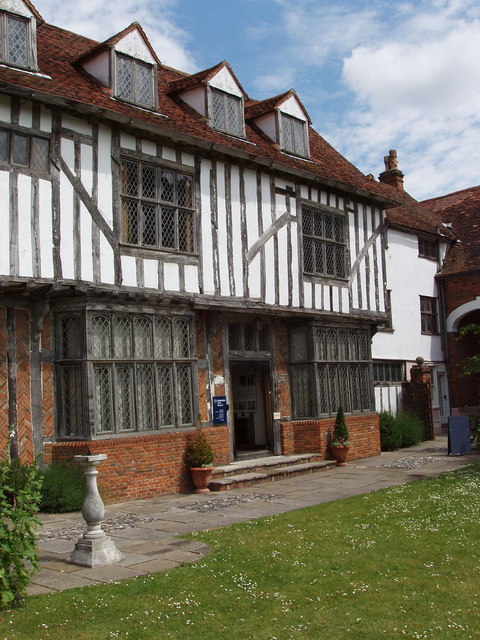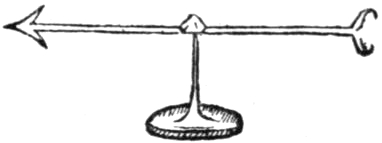|
Mount Gilbert (Antarctica)
Mount Gilbert () is a mountain, high, on the divide between Airy Glacier and Seller Glacier, northwest of Mount Castro, in the west-central Antarctic Peninsula. It was photographed from the air by the British Graham Land Expedition in February 1937, and the Ronne Antarctic Research Expedition in November 1947. It was surveyed from the ground by the Falkland Islands Dependencies Survey in December 1958, and was named by the UK Antarctic Place-Names Committee The UK Antarctic Place-Names Committee (or UK-APC) is a United Kingdom government committee, part of the Foreign and Commonwealth Office, responsible for recommending names of geographical locations within the British Antarctic Territory (BAT) and ... for William Gilbert, an English physician whose pioneer work '' De magnete, magneticisque corporibus'' (1600) laid the foundations for an understanding of earth magnetism and the variation of the compass. References Mountains of Graham Land Fallières Coast {{ ... [...More Info...] [...Related Items...] OR: [Wikipedia] [Google] [Baidu] |
Airy Glacier
The Airy Glacier () is a glacier long and wide, flowing west to the northeast portion of Forster Ice Piedmont, near the west coast of the Antarctic Peninsula. The glacier was first roughly surveyed by British Graham Land Expedition of 1936–37, then photographed from the air by the Ronne Antarctic Research Expedition in 1947, and surveyed by Falkland Islands Dependencies Survey in 1958. It was named by United Kingdom Antarctic Place-Names Committee for George Biddell Airy, British Astronomer Royal, who in 1839 introduced a method of correcting magnetic compass A compass is a device that shows the cardinal directions used for navigation and geographic orientation. It commonly consists of a magnetized needle or other element, such as a compass card or compass rose, which can pivot to align itself with ...es for deviation. See also * List of glaciers in the Antarctic * Norman Peak References Glaciers of Palmer Land {{PalmerLand-glacier-stub ... [...More Info...] [...Related Items...] OR: [Wikipedia] [Google] [Baidu] |
Seller Glacier
Seller Glacier is a well-defined glacier, 20 nautical miles (37 km) long and 4 nautical miles (7 km) wide flowing westward into Forster Ice Piedmont, western Antarctic Peninsula, just north of Flinders Peak. Roughly surveyed by British Graham Land Expedition (BGLE), 1936–37, and resurveyed by Falkland Islands Dependencies Survey (FIDS) in December 1958. Named by United Kingdom Antarctic Place-Names Committee (UK-APC) after John Seller John Seller (1632–1697) was an English compiler, publisher, and seller of maps, charts, and geographical books. From 1671 he was hydrographer to the King. Early life Seller, son of Henry Seller, a cordwainer, was baptized in London on 29 Decemb ... (about 1630-1698), English hydrographer and compass maker who published the first sailing directions for England, 1671; his ''The variation of the compass, with rules for its determination''. References Glaciers of Fallières Coast {{FallièresCoast-glacier-stub ... [...More Info...] [...Related Items...] OR: [Wikipedia] [Google] [Baidu] |
Mount Castro
Mount Castro () is a mountain, high, on the north side of Seller Glacier, southeast of Mount Gilbert, in the central Antarctic Peninsula. It was photographed from the air by the British Graham Land Expedition in 1937, and by the Ronne Antarctic Research Expedition in 1947. It was surveyed from the ground by the Falkland Islands Dependencies Survey in December 1958, and named by the UK Antarctic Place-Names Committee for João de Castro, a Portuguese navigator who made pioneer experimental investigations of the variation of the magnetic compass A compass is a device that shows the cardinal directions used for navigation and geographic orientation. It commonly consists of a magnetized needle or other element, such as a compass card or compass rose, which can pivot to align itself with .... References Mountains of Palmer Land {{PalmerLand-geo-stub ... [...More Info...] [...Related Items...] OR: [Wikipedia] [Google] [Baidu] |
Antarctic Peninsula
The Antarctic Peninsula, known as O'Higgins Land in Chile and Tierra de San Martín in Argentina, and originally as Graham Land in the United Kingdom and the Palmer Peninsula in the United States, is the northernmost part of mainland Antarctica. The Antarctic Peninsula is part of the larger peninsula of West Antarctica, protruding from a line between Cape Adams (Weddell Sea) and a point on the mainland south of the Eklund Islands. Beneath the ice sheet that covers it, the Antarctic Peninsula consists of a string of bedrock islands; these are separated by deep channels whose bottoms lie at depths considerably below current sea level. They are joined by a grounded ice sheet. Tierra del Fuego, the southernmost tip of South America, is about away across the Drake Passage. The Antarctic Peninsula is in area and 80% ice-covered. The marine ecosystem around the western continental shelf of the Antarctic Peninsula (WAP) has been subjected to rapid climate change. Over the past 50 ... [...More Info...] [...Related Items...] OR: [Wikipedia] [Google] [Baidu] |
Ronne Antarctic Research Expedition
The Ronne Antarctic Research Expedition (RARE) was an expedition from 1947–1948 which researched the area surrounding the head of the Weddell Sea in Antarctica. Background Finn Ronne led the RARE which was the final privately sponsored expedition from the United States and explored and mapped the last unknown coastline on earth and determined that the Weddell Sea and the Ross Sea were not connected. The expedition included Isaac Schlossbach, as second in command, who was to have Cape Schlossbach named after him. The expedition, based out of Stonington Island was the first to take women to over-winter. Ronne's wife, Edith Ronne was correspondent for the North American Newspaper Alliance for expedition and the chief pilot Darlington took his wife. Partial Listing of Discoveries * Mount Abrams - Named for Talbert Abrams, noted photogrammetric engineer * Mount Becker - Named for Ralph A. Becker, legal counsel who assisted in the formation of RARE * Mount Brundage - Named ... [...More Info...] [...Related Items...] OR: [Wikipedia] [Google] [Baidu] |
Falkland Islands Dependencies Survey
The British Antarctic Survey (BAS) is the United Kingdom's national polar research institute. It has a dual purpose, to conduct polar science, enabling better understanding of global issues, and to provide an active presence in the Antarctic on behalf of the UK. It is part of the Natural Environment Research Council (NERC). With over 400 staff, BAS takes an active role in Antarctic affairs, operating five research stations, one ship and five aircraft in both polar regions, as well as addressing key global and regional issues. This involves joint research projects with over 40 UK universities and more than 120 national and international collaborations. Having taken shape from activities during World War II, it was known as the Falkland Islands Dependencies Survey until 1962. History Operation Tabarin was a small British expedition in 1943 to establish permanently occupied bases in the Antarctic. It was a joint undertaking by the Admiralty and the Colonial Office. At the end of t ... [...More Info...] [...Related Items...] OR: [Wikipedia] [Google] [Baidu] |
UK Antarctic Place-Names Committee
The UK Antarctic Place-Names Committee (or UK-APC) is a United Kingdom government committee, part of the Foreign and Commonwealth Office, responsible for recommending names of geographical locations within the British Antarctic Territory (BAT) and the South Georgia and the South Sandwich Islands (SGSSI). Such names are formally approved by the Commissioners of the BAT and SGSSI respectively, and published in the BAT Gazetteer and the SGSSI Gazetteer maintained by the Committee. The BAT names are also published in the international Composite Gazetteer of Antarctica maintained by Scientific Committee on Antarctic Research, SCAR. The Committee may also consider proposals for new place names for geographical features in areas of Antarctica outside BAT and SGSSI, which are referred to other Antarctic place-naming authorities, or decided by the Committee itself if situated in the unclaimed sector of Antarctica. Names attributed by the committee * Anvil Crag, named for descriptive featu ... [...More Info...] [...Related Items...] OR: [Wikipedia] [Google] [Baidu] |
William Gilbert (astronomer)
William Gilbert (; 24 May 1544? – 30 November 1603), also known as Gilberd, was an English physician, physicist and natural philosopher. He passionately rejected both the prevailing Aristotelian philosophy and the Scholastic method of university teaching. He is remembered today largely for his book ''De Magnete'' (1600). A unit of magnetomotive force, also known as magnetic potential, was named the ''Gilbert'' in his honour. Life and work Gilbert was born in Colchester to Jerome Gilberd, a borough recorder. He was educated at St John's College, Cambridge. After gaining his MD from Cambridge in 1569, and a short spell as bursar of St John's College, he left to practice medicine in London and travelled on the continent. In 1573, he was elected a Fellow of the Royal College of Physicians. In 1600 he was elected President of the college.Mottelay, P. Fleury (1893). "Biographical memoir". In He was Elizabeth I's own physician from 1601 until her death in 1603, and James ... [...More Info...] [...Related Items...] OR: [Wikipedia] [Google] [Baidu] |
De Magnete, Magneticisque Corporibus
''De Magnete, Magneticisque Corporibus, et de Magno Magnete Tellure'' (''On the Magnet and Magnetic Bodies, and on That Great Magnet the Earth'') is a scientific work published in 1600 by the English physician and scientist William Gilbert. A highly influential and successful book, it exerted an immediate influence on many contemporary writers, including Francis Godwin and Mark Ridley. Contents In ''De Magnete'', Gilbert described many of his experiments with his model Earth called the ''terrella''. Gilbert made the claim that gravity was due to the same force and he believed that this held the Moon in orbit around the Earth. The work then considered static electricity produced by amber. Amber is called ''elektron'' in Greek, and ''electrum'' in Latin, so Gilbert decided to refer to the phenomenon by the adjective ''electricus''. Summary ''De Magnete'' consists of six books. Book 1 Historical survey of magnetism and theory of Earth's magnetism. The lodestone in antiqui ... [...More Info...] [...Related Items...] OR: [Wikipedia] [Google] [Baidu] |
Mountains Of Graham Land
A mountain is an elevated portion of the Earth's crust, generally with steep sides that show significant exposed bedrock. Although definitions vary, a mountain may differ from a plateau in having a limited summit area, and is usually higher than a hill, typically rising at least 300 metres (1,000 feet) above the surrounding land. A few mountains are isolated summits, but most occur in mountain ranges. Mountains are formed through tectonic forces, erosion, or volcanism, which act on time scales of up to tens of millions of years. Once mountain building ceases, mountains are slowly leveled through the action of weathering, through slumping and other forms of mass wasting, as well as through erosion by rivers and glaciers. High elevations on mountains produce colder climates than at sea level at similar latitude. These colder climates strongly affect the ecosystems of mountains: different elevations have different plants and animals. Because of the less hospitable terrain and ... [...More Info...] [...Related Items...] OR: [Wikipedia] [Google] [Baidu] |

.jpg)


